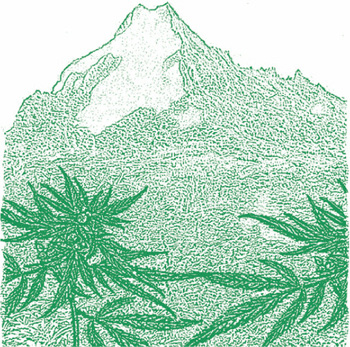In arid climates, such as Afghanistan or the Beqaa Valley of Lebanon, harvested cannabis has for centuries been dried and sieved to collect its cannabinoid-rich gland heads. This collected resin powder is pressed into hashish. In India, fields of unpollinated female cannabis flowers are cultivated to produce ganja, a potent marijuana preparation of these dried flowers. In the 1960s, hippies returning to California from India brought with them this Indian technique for producing seedless cannabis, dubbing it sinsemilla (see this page). In Afghanistan in the early 1970s, the Brotherhood of Eternal Love, a group of smugglers composed of surfers originally from Huntington Beach, California, employed the extraction technologies developed back in California to make ultra-concentrated oil from Afghan hashish. Hash oil, being more concentrated, was easier to smuggle than conventional hashish. Forty years later, this innovation would spark the “dabbing” craze—inhaling vaporized cannabis oil—among West Coast medical cannabis patients. Many cannabis varieties are harvested outdoors in California in September and October, and some tropical varieties do not finish flowering until the winter solstice. Flowers are harvested and carefully dried and manicured to remove extraneous leaf. However, the definition of “extraneous” is controversial, since some patients prefer all leaf to be removed, while others insist that keeping the leaves intact helps to protect delicate trichomes. The “correct” approach typically depends on whether the cost of keeping those leaves is an issue. The money-is-no-object approach keeps the smaller leaves to protect the flowers. Keeping these leaves intact reduces the likelihood of rupturing the trichomes on the dried cannabis flowers, which hastens spoilage. Outdoor Cultivation Cannabis loves sunshine. The cannabis plant flourishes outdoors from Alaska to Brazil, from Vietnam to Chinese Turkestan, to Humboldt County in California. A large number of indigenous cannabis varieties, called landrace varieties, have acclimated outdoors to different locales around the globe. These landraces exhibit a much wider range of characteristics than the common medicinal varieties currently cultivated in the United States. Some tropical outdoor landraces of cannabis, such as Thai or Colombian varieties, are not ready for harvest until weeks after the winter solstice. These tropical varieties are often extremely tall by harvest time, which makes indoor cultivation challenging at best, and at worst impossible. Prohibition of cannabis ensured that smaller cannabis varieties, with shorter flowering times, would become more popular simply because they were safer to cultivate than their tropical relations. Furthermore, these fast-flowering cannabis varieties can be cultivated at much higher latitudes since they are ready for harvest before early frosts. The relative heights of the two cannabis species following the three different methods of cultivation. Height depends on many factors, so heights are based on averages. Historically, some countries have, at times, fostered immense outdoor crops. For example, plots in remote valleys of Nepal in the early 1970s covered hundreds of acres, with cannabis plants stretching as far as the eye could see. Outdoor cannabis plants can grow to over 20 feet (6 meters) high and yield over 5 pounds (2.3 kilograms) per plant of flowers from one single annual crop. There have been claims that one advantage of outdoor cannabis cultivation over indoor growing is that the cannabis plant may actually require the full spectrum of sunlight in order to produce particular terpenes, and perhaps even certain rare cannabinoids. Outdoor cannabis plants consistently host higher levels of bacteria and mold than their indoor counterparts, but outdoor plants are typically healthier and more robust. Currently, larger-scale outdoor cultivation in the United States tends to be sequestered away in remote mountains or valleys, where the need for discretion limits the size of such harvests. While outdoor and lower-grade commercial cannabis are often lumped together, the reality is that the highest-quality outdoor cannabis will equal the quality of most indoor cultivation. It’s worth noting that since sun-reared outdoor cannabis will by its very nature have higher microbial and fungi levels than other forms of cultivation, patients with immune disorders may wish to monitor these biological counts by only using lab-tested medicines. Greenhouse cultivation: It is believed that this cultivation method may be the future of cannabis flower cultivation, as it is for many types of flowers. Indoor Cultivation Indoor cultivation is driven principally by prohibition, since it is considerably more challenging to detect indoor agriculture, and far easier to spot outdoor or greenhouse grows. Growing cannabis indoors has become an enormous clandestine industry. Hydroponics stores are found in every city in North America and Europe. Hundreds of cannabis-specific nutrient formulas are for sale in these shops. The primary advantage of indoor cultivation is that cannabis flowers and their resin-filled trichomes can be protected. Indoor cannabis cultivation is capable of producing the most pristine cannabis flowers, though not necessarily the finest. Conventional indoor horticultural lighting produces a limited spectrum of light that does not duplicate the wide spectrum produced by the sun. This spectral deficiency is believed to limit the number of chemical constituents that the plant can produce under artificial conditions. Recently, light-emitting diodes (LEDs) and plasma lamps have been introduced that may broaden the spectrum of indoor horticultural lighting for cannabis cultivation to better mimic sunlight. Additionally, these LED systems are more energy efficient. Indoor cultivation: It is difficult to estimate how much high-quality cannabis is produced indoors in the United States each year, but the number could exceed 1,500 tons. The second key to grading cannabis is visual inspection, for which you will need a 10–20×magnifying lens or loupe. Sunlight is the best light, since it exposes any discoloration. The plant material will range in color from deep to light green, with tinges of gold, yellow, and, more rarely, red. Some varieties of cannabis produce anthocyanin, a pigment that adds a purple or blue cast. Odd discoloration or browning can be a sign that the cannabis has spoiled. Indicators of high-quality cannabis are trichome gland head size and density. They should be topped with tiny heads of cannabinoid and terpenoid oil secreted from specialized cells at the tip of the trichome. Look for large, intact trichome heads—the more of them, the better. These heads should be primarily clear, but a few of them should also be milky. Amber heads mean that the cannabis was likely harvested after maturity. Bright white tendrils on the sugar leaves, the tiny trichome-encrusted leaves surrounding the flowers, are typically a sign of powdery mildew, while gray fuzz is a symptom of gray bud mold. If possible, break a bud to inspect its interior for visible mold. Tapping a bud on a white sheet of paper can dislodge some other types of mold spores onto the paper, so that they can be more easily detected. With a loupe, it should also be possible to detect a number of pest infestations, since aphids, mites, and gnats are easily trapped by sticky trichome resin. The aroma from a batch of dried cannabis can reveal a great deal about its quality and, in particular, its likely range of effect. Generally speaking the stronger the aroma, the better the quality of the cannabis and the more unique its effects. Aroma fades over time with the evaporation of the terpenes present, and its effects become generic.
FORMS OF CANNABIS
Flowers
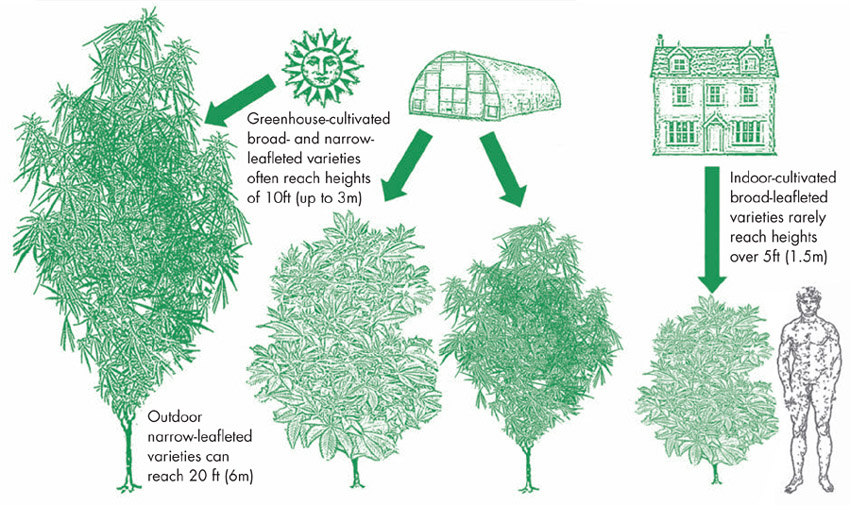
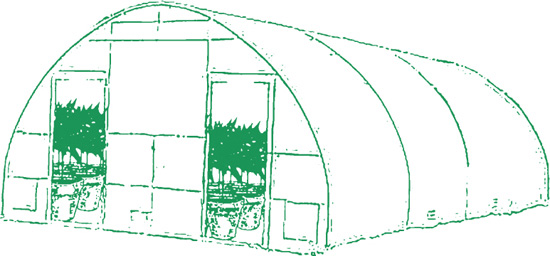
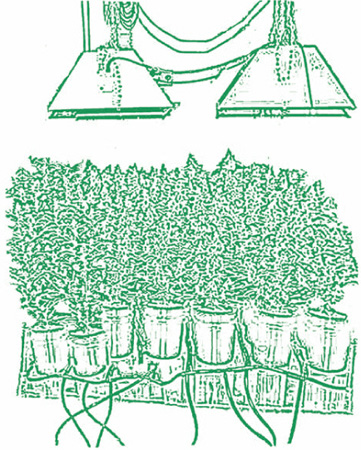
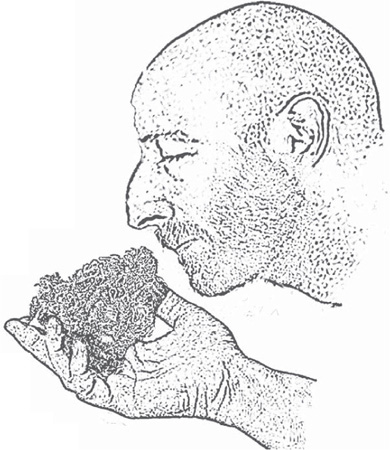

of Cannabis
Only gold members can continue reading. Log In or Register to continue

Full access? Get Clinical Tree



